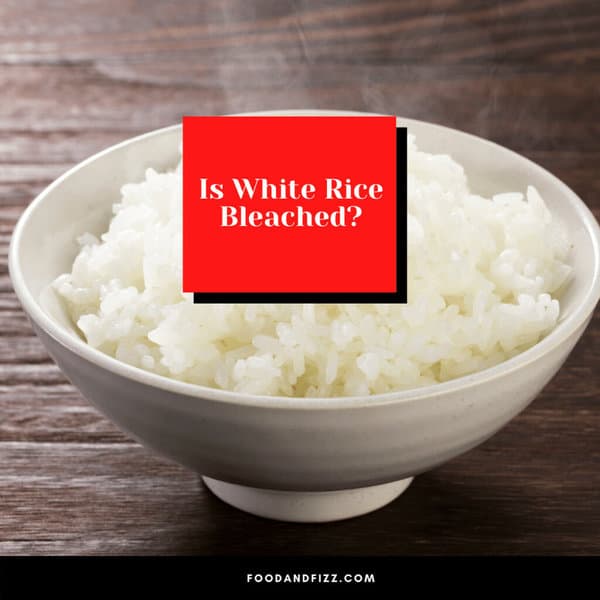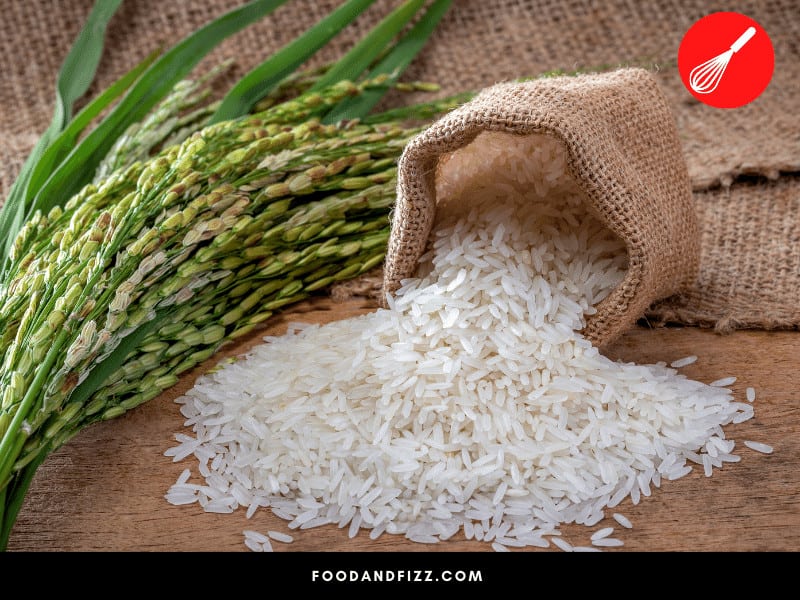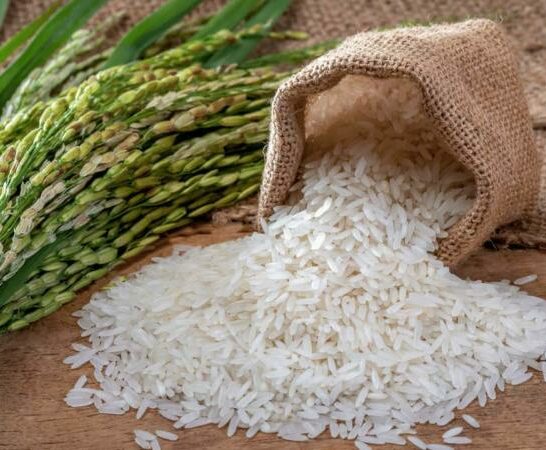Is white rice bleached? White rice is not bleached as it gets its white color in the process of milling rice according to the Institute of Food Technologists. White rice and brown rice derive from the same 7000 varieties of rice. Brown rice is considered whole rice that has not been milled into white rice.
Is White Rice Bleached?
Rice is never bleached during the manufacturing process and it gets its white color from the polishing process. The bran and the germ are removed which is where most of the color comes from while milling. Brown rice does not go through this extra milling process so it retains its color after production.

How Is White Rice Made?
Rice goes through three major steps before it’s ready to eat.
First, it goes through a threshing process, then it goes through a dehulling, and finally, it needs to be winnowed.
Threshing means that the husks are removed to expose the nutritious brown rice.
This is necessary because the grains of rice are stored inside the wheat plant and need to be extracted in order to be processed.
It doesn’t take much to thresh the grain from the plant, all that’s needed is some vigorous shaking and friction.
Then it enters dehulling where the rice grain is removed from the outer hull.
This is usually done by using a machine that has rotating stones with wire mesh screens.
The tricky part is creating enough friction where the hull is removed but not enough to where the grain is actually ground into flour.
The last step is called winnowing, which involves separating the husk from the whole grain of rice by using airflow to blow away all of the lighter chaff particles.
This leaves behind just brown rice and it’s ready for cooking or processing into white rice.
When making white rice, there is an additional step used that removes the bran layer which contains most of the color.
This is done by using a milling machine that has steel blades to chop the rice kernel into smaller pieces.
The rice then goes through a polishing process where it’s rubbed against a porous stone to remove any excess starch and give it its white appearance.
Eating White Rice
White rice has a higher glycemic index compared to brown rice according to SFGate. The glycemic Index is a
The GI of white rice is between 72-83. Compared to brown rice which has a GI of 48-63. A high glycemic index value is related to spikes in blood sugar levels according to Harvard University.
Does All Rice Go Through the Same Process?
Pretty much all rice goes through the same process as mentioned above, but there are some exceptions.
Wild rice does not use a milling machine because it’s already been broken up from the threshing process and is ready to cook when harvested.
This means that wild rice can be cooked in a variety of ways instead of just boiling like white or brown rice requires.
Any rice that is white will have to undergo the milling process at the end which removes the bran from the grain in order to get the color.
The only problem with this method is that the bran and other components that get left behind are actually the most nutritious parts of the rice.
This is why some people are trying to find alternatives to white rice that still provide the same taste and texture.
Which Rice Is the Healthiest?
If you are looking for healthier rice, you need to stick with the brown varieties.
Brown rice has more fiber and nutrients than white rice because the bran layer is still intact.
It also takes a little longer to cook, but it’s definitely worth the wait.
There is now pre-cooked brown rice that can be found in most grocery stores which makes it a lot easier to prepare when you are short on time.
The nutrients that are kept in the bran outer layer are thiamin, niacin, vitamin B-six, and magnesium.
White rice is a good source of energy but it doesn’t have the same fiber or nutrient content as brown rice.
It’s also been stripped of most of its essential vitamins and minerals during the milling process.
Wild rice is probably the best of the best when it comes to your health because it’s still in its natural state.
The only processing that it goes through is the hulling process, so all of the nutrients are kept intact without any additional milling or polishing like regular rice has to go through.
Wild rice also cooks up much faster than brown and white rice which makes it a convenient way to get your daily serving of nutrients.
Types of Rice
Jasmine rice
Jasmine rice is available as brown and white rice. It is a fragrant rice grown and Thailand according to Fine Dining Lovers. Its taste is close to popcorn, for an easy way to describe it.
Jasmine rice is available as a hulled or non-hulled version. When hulled it is called paddy rice. A dehulled version is known as brown rice. By removing the bran and the germ you get white rice.
The white rice produced when milling Jasmine rice is close to other white rice in terms of nutritional value.

Basmati Rice
Basmati rice is rice mostly consumed in Pakistan, Nepal, and India according to Once Upon a Chef. It is a long, thin rice with an aromatic, nutty taste.
Basmati rice is not bleached. It gets its white color from the dehulling and milling process. When hulled, Basmati rice loses some of its nutritional value.

Read about sushi rice vs. white rice next.
Frequently Asked Questions About Is Rice Bleached
What happens to the removed parts of rice?
The discarded parts of the rice grain that are removed during the milling process end up as rice flour. This is often used in gluten-free baking because it provides the same consistency as regular wheat flour. The discarded elements can also be turned into animal feed.
When did people start eating white rice?
White rice started to be produced in the 1800s, which is after the milling machine was invented. This made it a lot easier to remove the bran layer without causing too much damage to the rest of the grain. The earliest version of white rice came from China where they used special breeds that were naturally whiter than other types of rice.
Conclusion To Is White Rice Bleached
White rice has never been bleached during the entire production process. The color is achieved by a specific process that removes the part of the rice grain that has a brownish color. All white rice goes through this process and it actually leaves the rice less nutritious than other rice grains.

